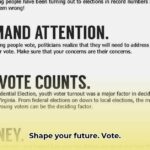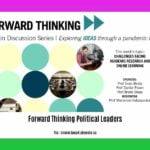Ever feel overwhelmed by the constant stream of political news? You’re not alone. This article breaks down the definition of national political news, its evolution, and its impact, exploring everything from news presentation to the spread of misinformation. You’ll also learn how to become a more discerning news consumer, equipped to filter through the noise and get to the truth. For example, understanding healthcare policy is crucial; see Trump’s healthcare plans.
National Political News Definition: Understanding Shaping News and Political Discourse
What is national political news beyond headlines? It’s how we connect to our government, policies, and officials. It’s what informs our decisions and shapes our future. Defining it precisely is challenging due to constant changes in technology, media ownership, and biases. National political news encompasses political campaigns, national elections, federal legislation, government policies, and judicial appointments. It includes reports on the activities of the President, Congress, the Supreme Court, and federal agencies.
A Blast from the Past: Evolution of National Political News and Information Dissemination
Before the internet, news traveled slowly via newspapers, reaching a limited, often wealthy, audience. Today, the internet delivers information globally at lightning speed, connecting us in real-time. However, this instant access also brings challenges, including the proliferation of “fake news” and the difficulty in discerning credible sources. The evolution of national political news includes the rise of cable news with 24-hour news cycles, the advent of partisan news outlets, and the increasing influence of social media platforms, which often act as echo chambers. Consider the impact of televised presidential debates, a relatively recent phenomenon that profoundly shapes public perception.
The Ripple Effect: Impact of Political News on Views, Actions, and Political Candidates
National political news has a powerful impact, shaping opinions of candidates and policies. It inspires action, from protests to contacting representatives. It can be a force for progress, civic engagement, and—equally—division. Do we fully grasp its influence on our lives and society’s direction? The impact of political news can be seen in public opinion trends, voter turnout rates, policy debates, and even levels of political polarization. For instance, a major investigative report can sway public opinion dramatically and influence the outcome of an election.
Navigating the Murky Waters of Modern News and Media Coverage
The modern news environment presents numerous challenges. Large media corporations control much of our news, potentially limiting perspectives and diversity of viewpoints. The rise of “infotainment” blurs the lines between factual reporting and entertainment, often prioritizing sensationalism over substance. Algorithms on social media platforms create “echo chambers,” reinforcing existing beliefs and potentially dividing and misinforming the public. This presents risks to a healthy and informed democracy. Media consolidation also raises concerns about local news coverage as national conglomerates focus on broader, less specific issues.
Becoming a Savvy News Consumer: Tips and Tricks
Understanding national political news requires critical thinking and proactive engagement. Don’t passively absorb headlines; actively analyze and evaluate the information you encounter. Here’s how to improve media literacy:
- Diversify Your Sources: Don’t rely on a single news source or platform. Seek diverse viewpoints from multiple outlets to obtain a more complete and nuanced picture. Read both domestic and international news sources to gain a wider perspective.
- Fact-Check Everything: Treat all information, even from trusted sources, as a hypothesis to be verified. Check the source credibility and look for evidence before accepting any claims as fact. Utilize independent fact-checking websites like Snopes, PolitiFact, and FactCheck.org.
- Develop Your Media Literacy: Learn to identify both overt and subtle biases in news outlets and individual stories to interpret the news more accurately and objectively. Understand common propaganda techniques and rhetorical devices used to persuade audiences.
- Engage in Respectful Dialogue: Discuss viewpoints with others, even those with whom you disagree, to better understand differing perspectives and form more informed opinions. Participate respectfully in online forums and discussions, and avoid personal attacks or inflammatory language.
- Understand Media Ownership: Be aware of who owns the media outlets you consume, as this can influence their editorial stance and coverage. Research the ownership structure of news organizations to better understand potential biases.
The Players: Shaping the News Landscape Through Regulations and Journalism Tactics
Many groups shape the news we see and hear. Their actions and choices have a profound influence on the quality, accessibility, and objectivity of information:
| Stakeholder Group | Short-Term Actions | Long-Term Actions |
|---|---|---|
| Journalists & Media | Double-check facts rigorously; give voice to underrepresented groups; adhere to journalistic ethics codes. | Invest in investigative journalism; promote media literacy training for all; establish clear guidelines for separating news from opinion; foster diverse newsrooms. |
| Policy Makers & Regulators | Fund media literacy programs; crack down on deliberate misinformation; protect net neutrality. | Conduct ongoing research into media polarization; update media ownership laws to reflect the digital age; ensure a diverse media landscape; promote transparent political advertising. |
| Citizens & Consumers | Be more discerning consumers of information; actively seek out diverse sources; engage in constructive dialogue. | Advocate for strong press freedoms; support independent journalism financially; participate in civic discourse; promote media literacy within your community. |
| Academics & Researchers | Develop better methods to measure bias in the news; study the influence of algorithms; analyze the impact of social media. | Conduct long-term studies to track changes in the news landscape over time; share findings widely; develop tools and resources for media literacy education. |
Looking Ahead: Democracy and the Future of National Political News
The future of national political news depends on our collective efforts. We must hold news organizations accountable for accuracy, impartiality, and ethical practices. We must also prioritize improving our own media literacy skills and engaging in thoughtful, respectful discussions, even when topics are difficult or controversial. A well-informed, critically-thinking public is essential for a strong and vibrant democracy. The critical question is how responsibly and thoughtfully we engage with the news to build a more informed, engaged, and equitable future.
How to Combat Misinformation in Increasingly Polarized Political News
Political falsehoods, both unintentional (misinformation) and deliberate (disinformation), severely threaten democratic processes. Social media’s amplification effect exacerbates the problem, but the roots run deeper into societal polarization and political campaigning incentives.
Key Takeaways:
- Political falsehoods threaten democratic processes, eroding trust and distorting public discourse.
- Social media algorithms amplify misinformation, rooted in societal polarization and strategic campaigning practices.
- Effective solutions target both the creation and the spread of misinformation, focusing on prevention and mitigation.
- Media literacy education, platform accountability, and carefully considered government regulation are vital components.
- The impact of misinformation varies across different contexts, requiring tailored and adaptable approaches.
The Spreading Web of Deception and False News
Political misinformation is spreading rapidly, particularly via social media platforms and within polarized communities. It encompasses both intentionally misleading information (disinformation) and unintentional inaccuracies (misinformation), impacting elections, public health, and overall trust in institutions. This “infodemic” necessitates a proactive and multifaceted approach.
Understanding the Landscape and Government Controls
Potential solutions are hotly debated. Some advocate for social media self-regulation and industry best practices, while others call for stricter government controls and oversight. Even the effectiveness of fact-checking is sometimes questioned, as some studies suggest it can reinforce existing beliefs in certain individuals. Striking a balance between protecting freedom of speech and safeguarding the public from demonstrably false information remains a significant challenge for policymakers.
The Role of Technology and Polarization in Today’s Political Climate
Artificial intelligence (AI) presents both opportunities and challenges in the fight against misinformation. AI algorithms can be used to detect and flag misinformation, but they can also be used to create sophisticated deepfakes and spread disinformation at scale. Political polarization creates fertile ground for misinformation, as distrust in mainstream media and scientific expertise fuels the acceptance of false narratives and conspiracy theories.
A Multi-Pronged Approach: Combating Disinformation in Political News
Effectively combatting misinformation requires a comprehensive strategy that emphasizes media literacy, fact-checking, platform accountability, and responsible governmental oversight.
- Empowering Citizens: Comprehensive media literacy education is crucial, beginning in schools and extending to adult learning programs. Citizens need to develop critical thinking skills to evaluate information, identify biases, and distinguish credible sources from unreliable ones. Equip citizens with skills for critical consumption of information.
- Holding Platforms Accountable: Social media platforms must enact robust policies and invest in technologies like AI to detect and curb the spread of harmful and misleading content. Transparency in content moderation practices and algorithms is also essential for building trust and accountability.
- Governmental Intervention (with Cautions): Governments should invest in media literacy campaigns, support independent fact-checking organizations, and conduct research on the spread and impact of misinformation. Regulation of malicious disinformation campaigns should be carefully considered, balancing the need to protect democratic processes with the preservation of free speech principles.
- The Role of the Media: Independent news organizations play a crucial role in combating misinformation by adhering to high journalistic standards, providing accurate and unbiased reporting, and supporting local news initiatives. Professional training for journalists on identifying and reporting misinformation is also essential.
Navigating the Nuances and Language Barriers
The effectiveness of different strategies for combating misinformation can vary depending on the specific context. The impact of misinformation can differ significantly based on the political climate, cultural background, and demographic characteristics of the target audience.
- Discover Verna Garver’s Untold Story: A Legacy of Resilience - July 20, 2025
- Remembering Verna Garver: Unveiling a Life Beyond the Hollywood Lights - July 20, 2025
- Uncover Verna Garver’s historical significance: A biography - July 20, 2025















